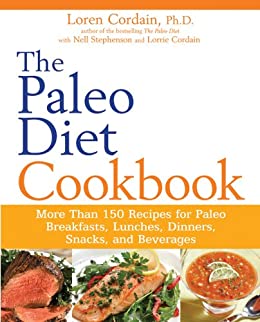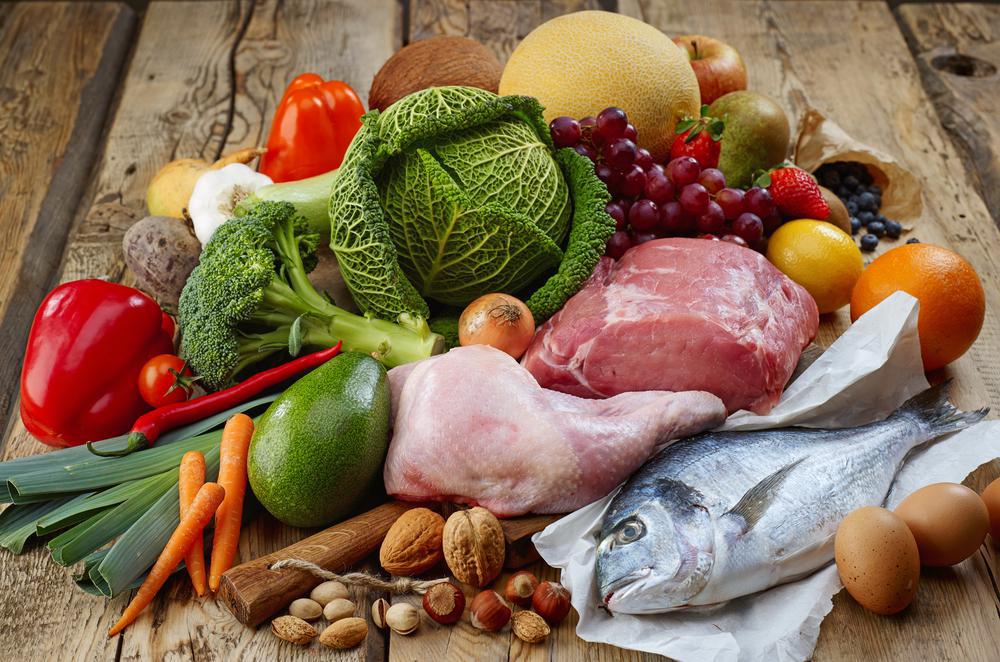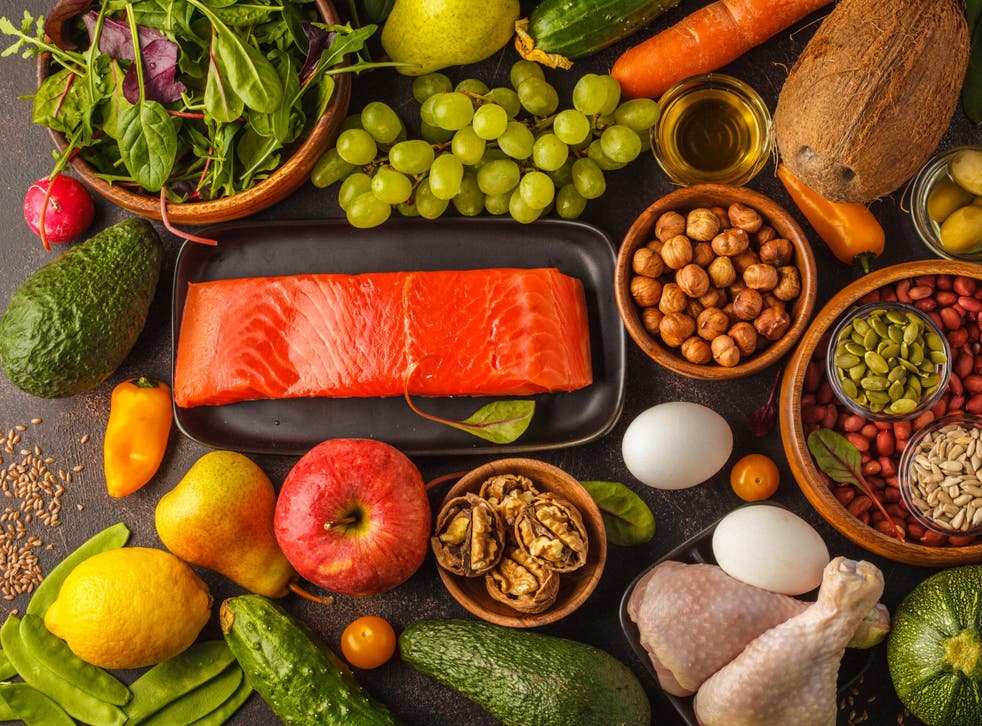
Dr. Loren C. Cordain, an expert in nutrition and exercise physiologicallogy, is a strong advocate of Paleolithic eating. However, there are many misconceptions about Paleolithic eating habits. Let's take a look at some of the myths that surround this diet and see why it is so important to choose healthy foods. These myths are associated with the diet.
Dr. Loren Cordain
Dr. Loren Cordain, a world-renowned authority on human evolution is well-known. He has appeared on the front page of The New York Times, Wall Street Journal, and Dateline NBC. He is the world's leading authority on natural human diet. He has published more that 100 peer-reviewed scientific papers in this area and has pioneered research on the health effects of eating foods from Stone Age ancestors.
Dr. Cordain's research is focused on the evolutionary as well as anthropological foundations of our diets. Many of his publications are concerned with the nutritional compositions of wild animals and plants that were eaten by early human beings. He is the leading expert on Paleolithic nutrition and has spoken extensively about this topic. His books are well-received and highly regarded. For more information on Dr. Cordain and his work, please read the biography.
His research

Prof. Loren Cordain's research has uncovered a link between diet and certain diseases of modern civilisation. Stone Age people were less likely to consume potassium and sodium, which are linked with modern diseases. People who lived in the Middle East also ate more fruits, vegetables, and other healthy foods. This may explain some of the diseases of modern civilisation. However, if diet is only one part of the problem why haven't people been eating more fruits or vegetables?
One of the most popular health movements is Paleo, which prohibits whole grains, cereals, legumes and dairy products, as well as vegetable oils. In fact, many researchers have made the same recommendation. The Paleo diet is more effective than other diets at improving your health and immune system. Although Dr. Cordain's research does not prove that humans can survive without these foods however, many people can reap the benefits of it.
His book
This book will explain the science behind Paleolithic eating habits. American scientist Loren Cordain is a specialist in nutrition and exercise physiology. His book, Eat to Live, is the first book written by a leading advocate of the Paleolithic diet. Cordain's methods may be questioned by some, but there are numerous scientific studies that back him up.
Loren Cordain, who is a Colorado State University professor and one of the leading experts in exercise physiology as well as nutrition, is known worldwide. He has collaborated with world-renowned scientists in the development of the Paleo Diet. This is the first book written by one of the founders of this fad diet. He explains in the book how the Paleo Diet has changed our lives. Get it now to make a permanent change in your diet.
His views about nutrition

One of Dr. Cordain’s most important contributions to modern healthcare is his research on diet. He holds a doctorate from the University of Utah in health. Since 1982, he teaches at Colorado State University. He has been featured on Dateline NBC as well as the Wall Street Journal and the New York Times. He is widely regarded by the world's leading authorities on natural diets.
Taking a look at paleolithic diet history, Cordain provides valuable insight into the benefits of this lifestyle. Paleo was introduced by Dr. Boyd Eaton and has since become one of most popular dietary trends. Dr. Cordain continues to study the benefits of this diet on health in all ages, as well as children. He also discusses legumes, dairy and carbohydrates to reveal the truth of what our bodies are designed to eat.
His critics
Criticians of Loren C. Cordain's Paleo Diet draw attention to numerous facts and examples in their critique. Even though lean beef is rich in protein, it is lacking essential nutrients like calcium, sodium, and folac acid. It does not supply the body with essential nutrients like vitamin B and omega-3 fatty oils.
FAQ
How to Become a Chef?
There are many options for becoming a chef. Start by enrolling in a class at a vocational school or community college. Then, look into attending culinary school. You can also apply for a paid internship.
What is the average time it takes to become a chef? What is the average career path in this field?
Becoming a chef takes approximately five years. You will learn basic cooking techniques, and get experience as a chef assistant. Once you have completed your training, you may apply for executive, sous, and line chef positions. The annual average salary of a chef is $25,000-$60,000.
What ingredients do I need to purchase to cook?
You don't have to buy all ingredients. Most grocery stores sell premade sauces and other items you can use as substitutes. Premade meals are an option if you're looking for a way to save some money.
What is the cost of a culinary school?
The costs of culinary school can vary depending on where and how long it takes. The average tuition ranges from $10,000-$30,000 per year. Most students graduate with about $20,000 in debt. There are programs that offer work-study and scholarships.
What are the health benefits of slow cooking?
Slow cookers can be very helpful because you can prepare delicious meals quickly. Slow cooker recipes are healthier than traditional ones because they use less oil and fat. Additionally, slow cookers are more convenient than traditional recipes because they take care for themselves while you're sleeping.
Who is the best path to a career in chef work? How do I begin my career as chef?
Apprenticeships are a great way to get started if you want to become a chef. Apprenticeships give you the opportunity to work for many years without having to pay tuition fees. After your apprenticeship is completed, you can apply to be a sous chef. Sous chefs assist cooks with tasks such as making salads, and desserts. They also oversee the entire operation of the restaurant.
Statistics
- In the United States, the category is estimated at $23.2 billion annually and is growing faster than the market. (washingtonpost.com)
- under 10 Kids have been taught that there is special food just for them, and Fiese says that 10 percent of kids will throw a tantrum if they don't get the food they want. (washingtonpost.com)
- According to the BLS, chefs earn $58,740 a year. (learnhowtobecome.org)
External Links
How To
How to make a perfect eggroll
Omelets are a favorite breakfast food of mine. But how do they turn out so perfectly? I have tried many different recipes and methods, but none of them work. Today, I'd like to share some tips with you in order to make delicious and fluffy omelets every day.
It is important to know that eggs can be temperamental when making omelets. Eggs must be purchased fresh, preferably organic, and kept chilled until ready for cooking. You must keep them cool enough to allow the whites to form properly and the yolks to become too runny if they're not kept at the right temperature. This will make your omelets appear strangely colored. It is best to use room-temperature eggs if you are going to cook them right away.
Another tip is to separate the egg before adding it to the pan. It is important not to allow any white to mix with the yolk as this could lead to the omelet becoming curdled.
If you add the egg directly onto the stovetop, you might end up burning the bottom part of the egg, which would ruin the texture of your omelet. Instead, heat the egg for 10 seconds in the microwave before placing it in the pan. The microwave heat cooks the eggs just right without overcooking them.
Next, let's talk about mixing the eggs. When you mix eggs together, you want to beat them well. Turn the bowl upside down and grab the whisk to do this. Next, shake the bowl vigorously. By doing this, the egg is thoroughly mixed with the air in the bowl.
Now it's time to have fun: pour the milk into the mixture. The first step is to pour half of the milk in the beaten eggs. Next, fold the eggs into the remaining milk. Don't worry if there are still streaks of egg visible; these streaks will disappear once you flip the omelet.
After you have folded your eggs, heat up the oil on medium heat. Wait for it to get hot. Once the oil begins to heat, add 1/4 cup butter and swirl the pan to coat it. Carefully open the pan's lid and add salt to the pan. The salt will help to prevent the omelet's sticking to the pan.
Once the omelet has formed completely, cover the pan and let it set for a few minutes. Use a spatula to flip the omelet or turn the pan upside-down. Cook the other side for about a minute. Serve the omelet immediately by removing it from the pan.
This recipe works best when you use whole milk.